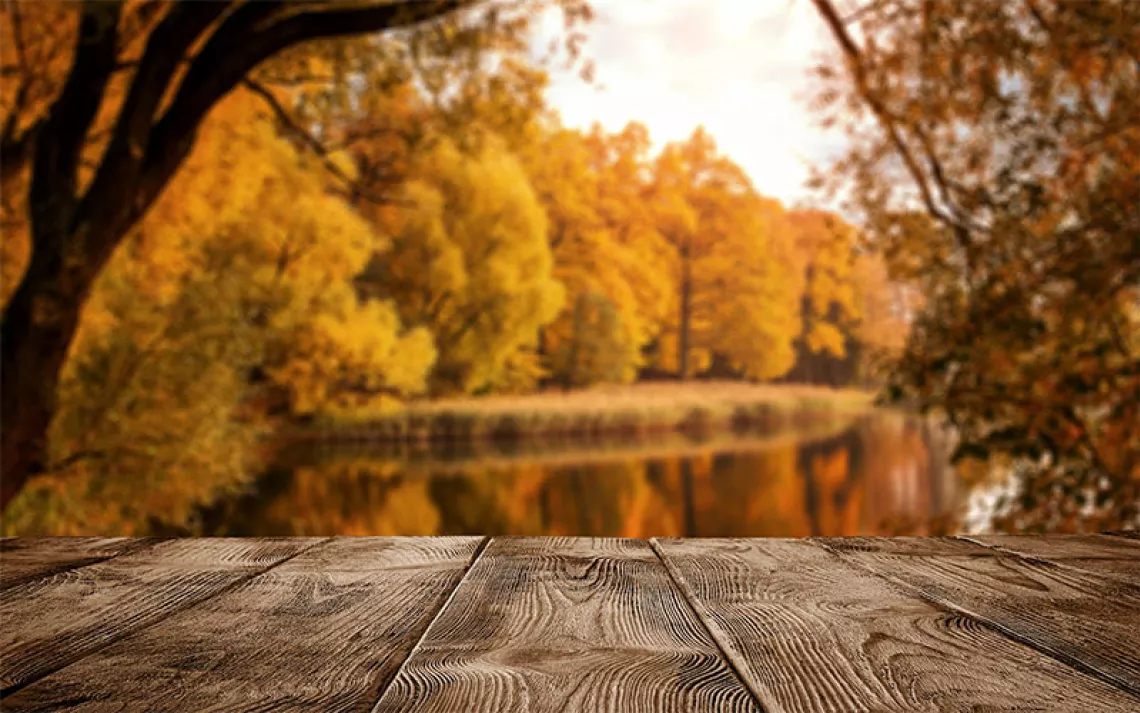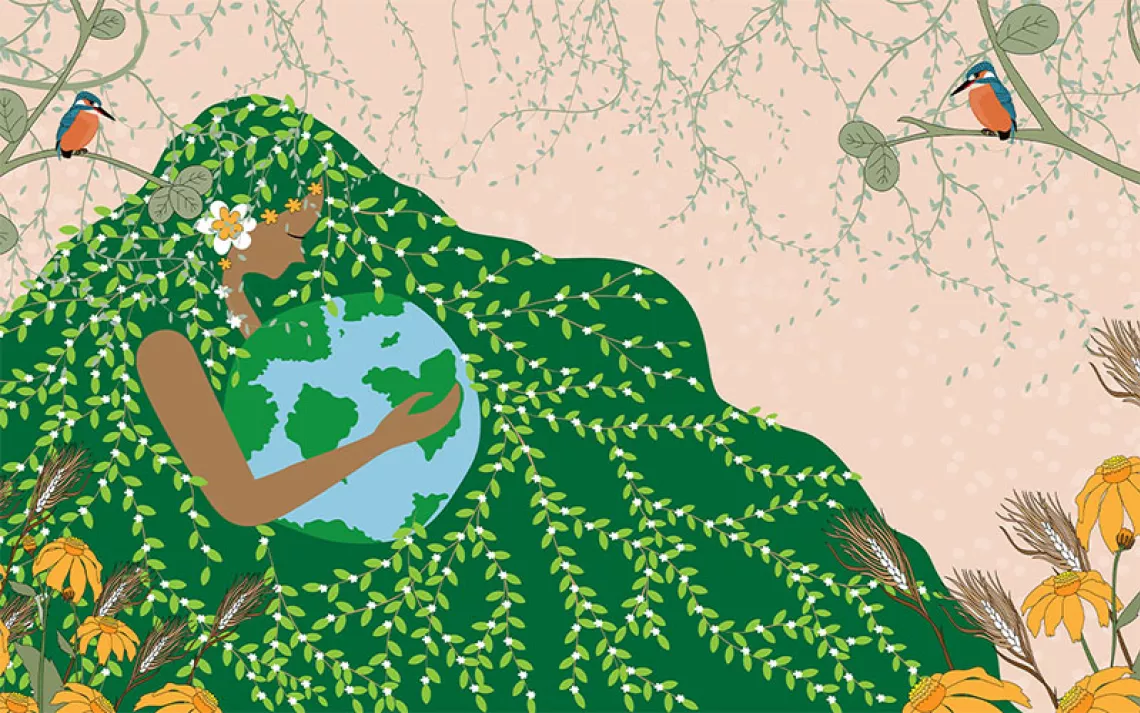6 Fun Ways for Families to Fete Earth Day
Earth Month offers tremendous teachable moments for kids
Every year, an estimated 1 billion people across nearly 200 countries participate in Earth Day on April 22—including millions of families that partake in eco-inspired action. Indeed, Earth Day and Earth Month offer an ideal time to educate children about the importance of preserving the environment. And community events like trash pickups and tree plantings, along with at-home projects, also demonstrate to little ones the power of big change when everyone does their part.
Earth Day first started in 1950, and these days, it’s easier than ever to find an event to join: These Sierra Club activities are a great place to start perusing, as are online community groups such as Nextdoor. Below, we’ve outlined some additional ways you and your family can get out and make an impact on Earth Day.
1. Start a family garden. Whether in a backyard, on a balcony, or simply perched in a sunny windowsill, a garden is an all-around win for setting good green habits. It provides kids with the chance to see firsthand where their food comes from (and the fun of eating what they grow may even offset picky eating habits). Depending on how big it is, a garden can significantly cut your family’s carbon footprint (and save money) when it comes to produce. Finally, it’s a productive way for little ones to play in the dirt—and start cultivating a green thumb at an early age.
Building a garden doesn’t have to be a complex, spendy project, either. A great way to start lies in using what you already have on hand: Small jars, compostable cups, and egg cartons (and even eggshells) are all ideal for sprouting seedlings. Choose fast-growing seeds that germinate quickly, such as lettuce, radishes, cucumbers, and green bean varieties (herbs, including basil, chives, and cilantro, are another good option) along with high-quality potting soil. (You may need to eventually transplant them to bigger containers or outside.) Kids will delight in seeing what they planted start to grow, and within a few weeks, your fam could be feasting on your first harvest. For more kid-friendly ideas (think stone soup, herbal tea parties, and worm bins), check out this handy guide to garden-adjacent activities for preschool, elementary school, and tween-aged kids.

Sign up to receive Sierra News & Views
Get articles like this one sent directly to your inbox weekly.
With this action you affirm you want to receive Sierra Club communications and may vote on policy designated by the Sierra Club Board.
2. Talk about the birds and the bees. No, not that conversation: Instead, discuss how these pollinators, along with butterflies, bats, and other species, are critical components of our food system, planet, and, well, our existence. It’s the perfect segue into building a DIY bird feeder. If you’re fairly handy and have some extra dishware laying around, you can make a clever feeder from a plate and a bowl. Or go low-tech and easily fashion one out of a plastic bottle, pinecones gathered from a nature hike, or even a toilet-paper roll. Hang up your feeder(s) and enjoy the fun of watching your new feathered friends fly in for a snack—not to mention the feel-good factor of bringing some biodiversity to your outdoor space.
3. Try your hand at worm composting. Vermiculture—the process of using earthworms to compost—may sound intimidating for first-timers. But Nikita Legall, founder of Ah Grow, a blog about home growing projects, says it can be an ideal way to introduce youngsters to the concept of composting. “Because they can actually see the earthworms, unlike the microbes in traditional composting, it’s often a really good place to start with kids,” Legall says. “It's a good opportunity to teach them about the different types of worms and the role they play in the soil.”
To get started, you’ll need a large storage bin (ideally, not a clear one, as “worms don’t like the light,” Legall says); “brown matter” or “bedding” for the worms, such as leaves, cardboard, or newspapers; earthworm food (non-citrus fruit and veggie scraps are ideal); and earthworms, which you can order from a local worm farmer. From there, follow the steps on Legall’s post (or any number of others, like this one, with info about vermiculture) and be prepared for some trial and error. But the reward is worth it: Earthworms can eat up to half their weight per day, in the process creating excellent fertilizer, and little ones will love watching these creepy-crawlies work their magic.
4. Plan an Earth-friendly family vacation. With summer on the horizon and countless trips scrapped because of the pandemic, many families are especially eager to take a much-needed vacation this summer. But it’s no secret that travel—especially by air—isn’t as delightful for the planet as it is for travelers themselves. This Earth Day is the ideal time to discuss how your family can lighten the footprint of your next getaway, whether that means taking the train instead of flying; planning a camping or bikepacking trip; or simply staying somewhere (from the destination itself, right down to your hotel) with a proven commitment to sustainable initiatives. Colorado, for example, is a green leader in tourism, from popular destinations like Aspen and Glenwood Springs that are powered by 100 percent renewable energy, to initiatives encouraging visitors to visit responsibly.
5. Start a daily sustainability practice. With all the constant doomsday headlines about a planet in crisis, it’s easy to become overwhelmed with existential dread. In fact, eco-anxiety is recognized by the American Psychological Association as “chronic fear of environmental doom”—a phenomenon that more people, especially young ones, are experiencing.
One way to combat anxiety while raising future champions for the planet is to take action, even in a small way. That’s the premise behind OneGreenThing, a nonprofit designed to empower people into doing just what its name suggests every day. “The idea is that doing one thing each day to connect with the planet—as simple as a walk in nature, calling a member of Congress, or composting—can help ease eco-anxiety and create the culture shift we need for big climate policy solutions,” says OneGreenThing founder Heather White, who’s also written a book on the concept. However small, such actions are a great way to start making sustainability a habit for the whole family—not to mention a fun dinner-table conversation topic. (And don’t miss Sierra’s guide to simple personal and political weekly Earth Month activities.)
6. Gamify going green. Families with a little extra competitive spirit (you know, the ones whose game nights require full body armor) can ratchet up the excitement of Earth Day beach or park cleanups or by adding in some stakes. Figure out prizes or rewards (no dish duty for a week, say) for whoever picks up the most trash or plants the most trees. Keep the competition going at home with other mini eco-challenges: See who can go the longest without eating meat, taking the car, or using the dryer, for example.
Meanwhile, green-minded families ready to level up their carbon-offset contributions can check out broader initiatives like the 30-day challenges by Random Acts of Green, a Canada-based, women-led social enterprise. As part of its current Earth Month Challenge, Planet Bootcamp encourages participants to “approach your green goals the same way you’d approach your health and fitness goals,” complete with training plans and pep talks. Participants log green acts on the free app and see the results of their efforts via impact reports.
Organizers say they see a bump in the number of acts logged when there’s an element of friendly competition involved, along with a fixed time window. “By gamifying climate action, we can help people get over that initial paralysis that occurs when they hear doom and gloom news,” says Random Acts of Green CEO Jessica Correa. “No matter which environmental problem gives you nightmares—food waste, plastics in the ocean, or climate change—they all demand the same thing: people acting together.”
 The Magazine of The Sierra Club
The Magazine of The Sierra Club




